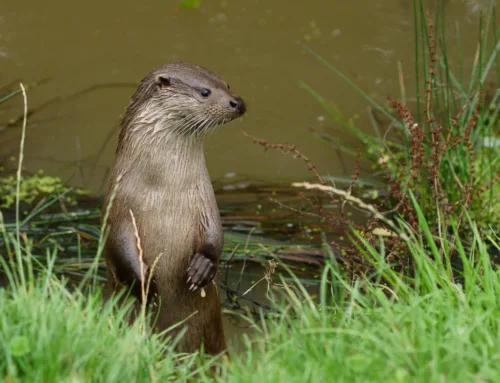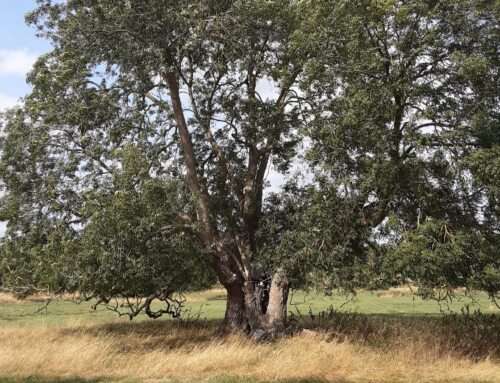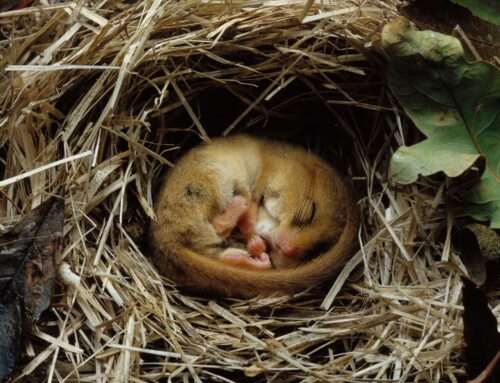Using Beavers to Benefit Ecosystem Health
Article prepared by Rachel Crapper, Assistant Ecological Consultant
Importance of ecosystem health
We all benefit from a well-functioning and health ecosystem which improves water and air quality and helps limit disease and stabilize the climate.
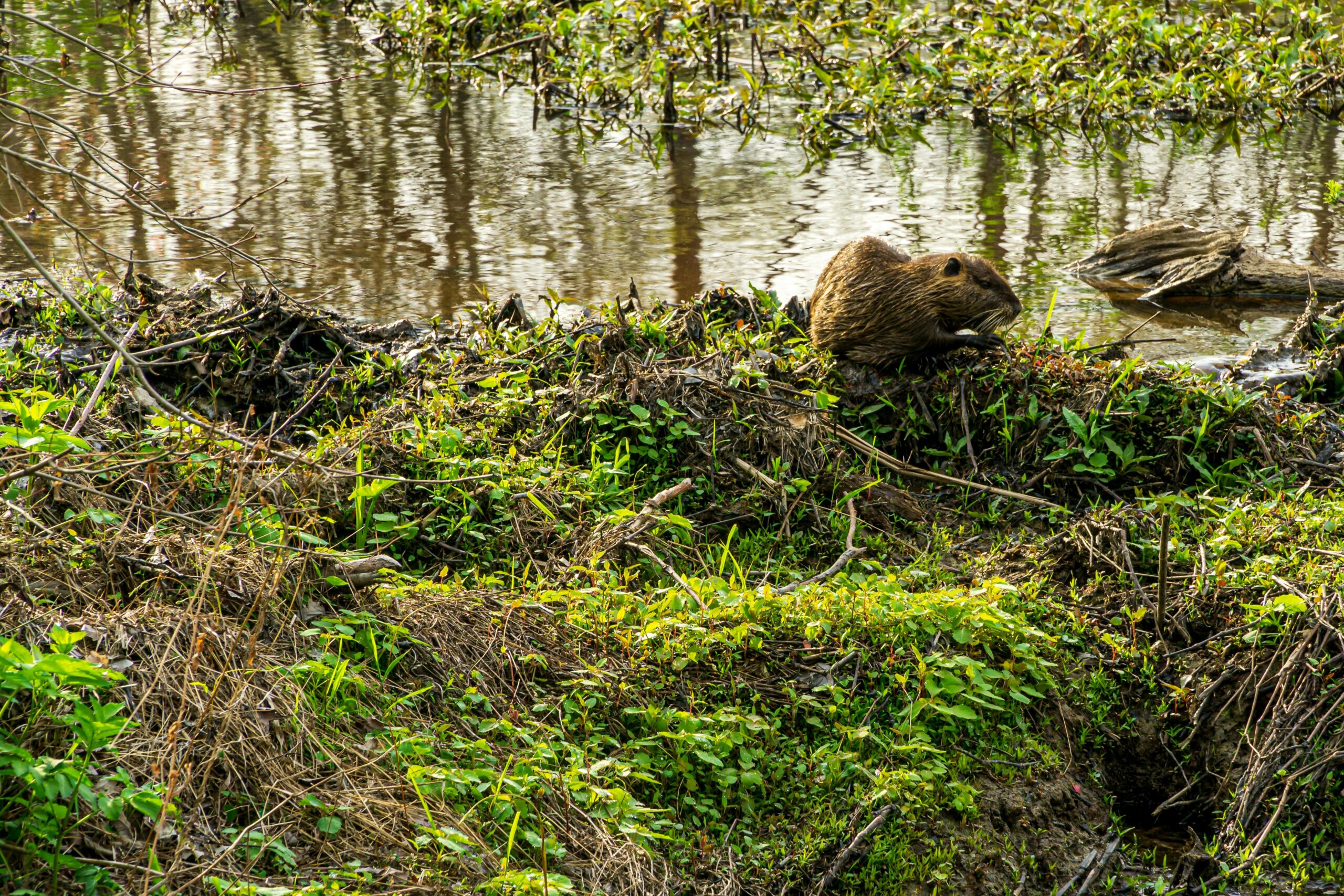
How do beavers help?
Ecosystem health
Beavers have an important role to play concerning ecosystem health as they have the ability to create wetlands by constructing dams and creating ponds. This helps to manage water-related issues such as flooding, drought and water pollution. Under the right conditions, beavers are a keystone species as they create, modify and maintain conditions that support entire ecological communities.
Biodiversity
A flowing stream or pond may be provided with many more habitat “niches” if beavers are present. For example, the introduction of beavers can increase plant biodiversity. This is because beavers will remove trees and flood the land which creates space for plant species to emerge. The plants will provide cover and food for new species and as the wetland expands, plants will spread into the newly available habitat.
The increase in vegetation will also expand the food and habitat available for a wider variety of species such as amphibians and mammals. Beavers bring wood into the water to make lodges which some waterfowl will nest on top of. These lodges provide shelter for insects which then become a food source for fish taking cover in the woody parts of the lodges that are in the water.
Water quality
Beaver dams and pools reduce soil erosion and retain sediment which filter out pollutants such as pesticides and fertilisers. They also store nutrients, resulting in the water flowing downstream through the beaver ponds being cleaner than the water that went into it (Puttock et al. 2017).

Figure 1- Beaver bite marks on a fallen tree at Spain’s Hall Estate
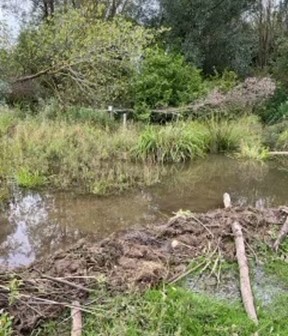
Figure 2- Beaver damn making on Spain’s Hall Estate
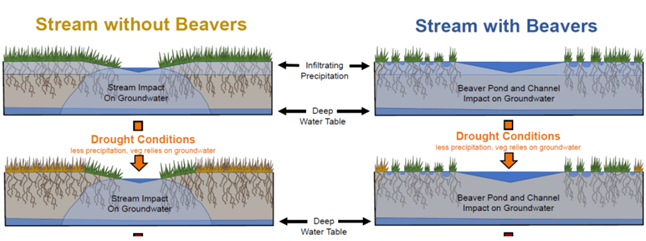
Figure 3- Display of how beavers affect the surrounding habitat (Fairfax, E. and Small, E. 2018)
Case study- Spain’s Hall Estate- CIEEM Magazine (Issue 116)
Spain’s Hall Estate is an example of landowners who are actively involved in nature-based solutions. This site showcases beavers which have been able to thrive and benefit the environment around them. Beavers have been reintroduced to the estate to enhance ecosystem services across the 832ha landholding.
Already, over 20 dams have been created and a family of two beavers has now become six. Water voles, water shrews and kingfishers have recognised the area due to the wetlands the beavers have created.
There has been anecdotal evidence received from Finchingfield residents that the beavers may already be reducing the amount of flooding in the village. Recent rainfall, which would have usually caused flooding, has not been an issue due to the improved water storage on the upstream Estate. It is predicted that the risk of flooding will continue to reduce with the release of additional beavers and their likely creation of new ponds and dams.
Other studies have also shown that beaver reintroductions can have a profound effect on water quality, enhancing biodiversity and reducing flooding downstream (Brazier et al, 2021). These studies have shown great promise in terms of the positive effect of beavers on ecosystem health and hopefully, the reintroduced population will grow and further benefit the wider community.
The Agarty Beaver Project is a project that was created due to the necessary relocation of a family of beavers. This family of beavers will start to build dams and create wetlands in their new home. To see the Agarty beaver release in Scotland, please click here
If you are interested in rewilding or restorative ecology on your land or property, please contact our ecology team on 01869 340 342 ext. 0311 .
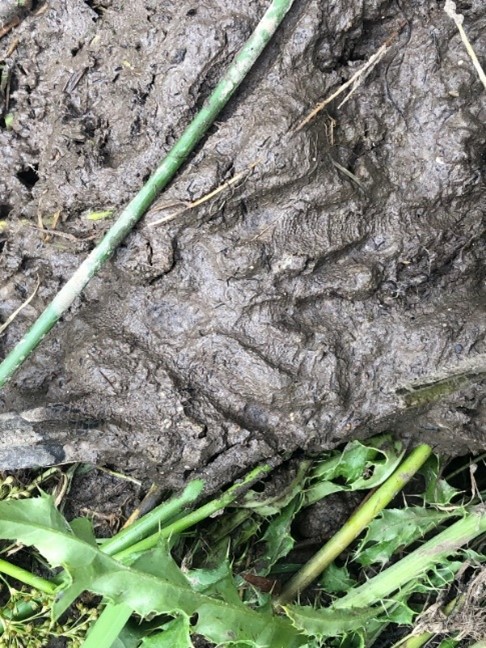
Figure 4- Beaver footprints at Spain’s Hall Estate
Bibliography
Agarty Red Kites https://argatyredkites.co.uk/beavers/
Brazier RE, Puttock A, Graham HA, Auster RE, Davies KH, Brown CML. Beaver: Nature’s ecosystem engineers. WIREs Water. 2021 Jan-Feb;8(1):e1494. doi: 10.1002/wat2.1494. Epub 2020 Nov 27. PMID: 33614026; PMCID: PMC7883483.
Fairfax, E and Small, E. (2018). Using remote sensing to assess the impact of beaver damming on riparian evapotranspiration in an arid landscape.. Ecohydrology. 11(7).
Puttock A, Graham HA, Cunliffe AM, Elliott M, Brazier RE. Eurasian beaver activity increases water storage, attenuates flow and mitigates diffuse pollution from intensively-managed grasslands. Sci Total Environ. 2017 Jan 15;576:430-443. doi: 10.1016/j.scitotenv.2016.10.122. Epub 2016 Oct 26. PMID: 27792958.


